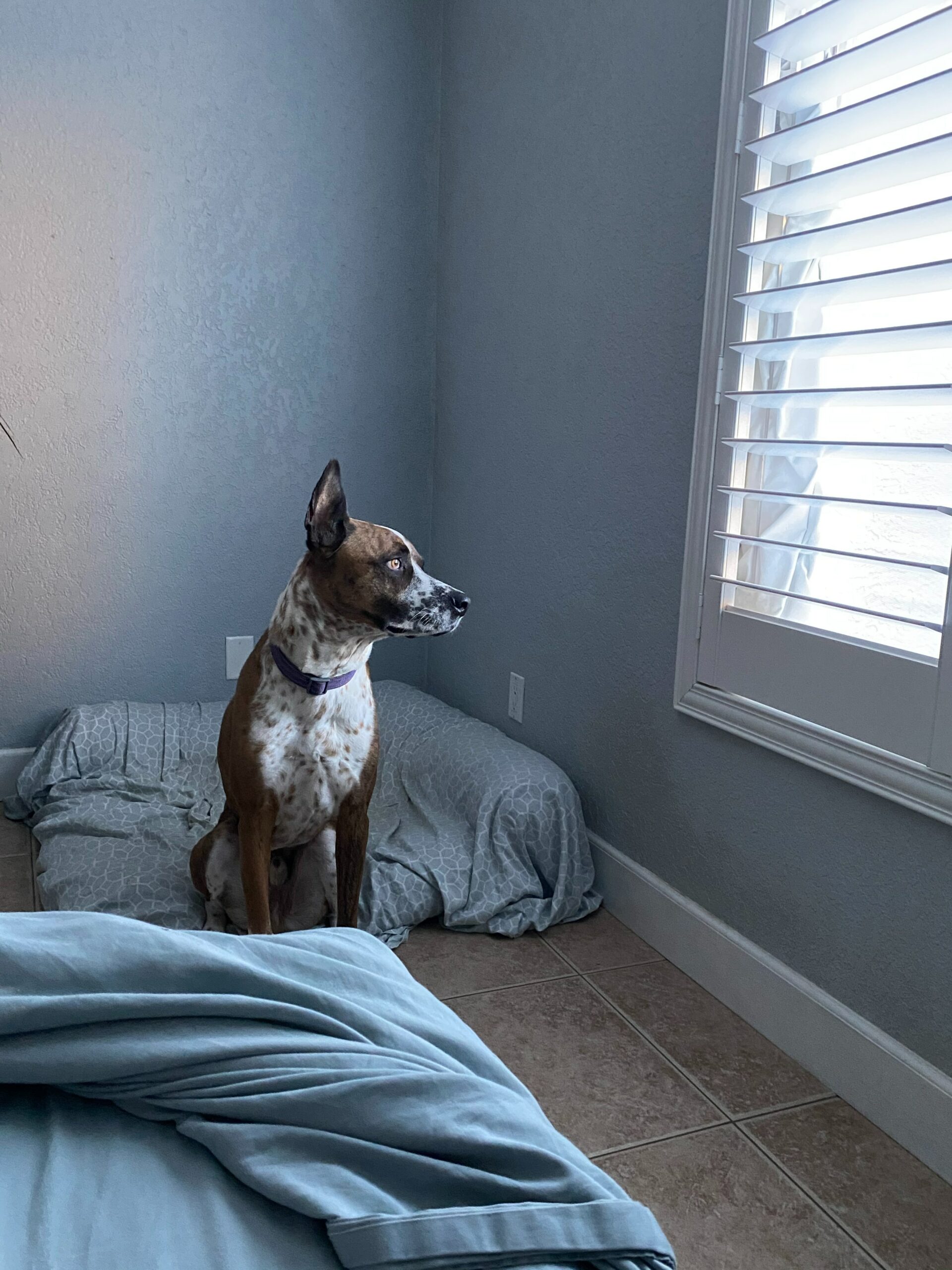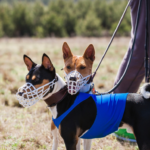
Separation Anxiety in Dogs
by Lindsey Hazlett
In general, separation anxiety is a common issue that many pet owners experience. Now that many new owners are going back to work in the office after the pandemic, or simply spending more time doing activities outside the home, there are a lot of dogs currently struggling with this.
What is Separation Anxiety?
Separation anxiety is the feeling of distress and panic that some dogs experience when left alone or when their owner leaves them. The severity of the distress can vary.
Here are some common signs of separation anxiety:
- Barking and howling
- Excessive pacing and drooling/sweating
- Destruction
- Escape efforts
- Urination and defecation
There certainly can be other causes of these behaviors (boredom, incomplete house training, alerting to disturbances outside the home, etc.), so it may be best to set up a video camera to watch what truly happens when you leave your pet alone in order to determine the root issue.

What causes it?
Dogs can develop separation anxiety for a variety of reasons that are often difficult to pinpoint. Common causes include lack of positive alone time as a young dog, genetic predisposition, environmental changes, changes in schedule, or any combination of these.
Some dogs will begin exhibiting signs early in puppyhood or adolescence, and others develop it later in life.

Can I prevent it?
If your dog is young or is not currently exhibiting signs of separation anxiety, it is important to begin teaching them that it is okay to be alone.
Create a safe space for your dog, whether it be in a crate, expen, or separate room. Include comfortable materials and eliminate the safety hazards. Then, take some time to help your puppy create a positive association with the space. Provide treats, fun toys and bones, and enrichment activities. Reward your dog for choosing to enter that space.
Slowly leave the space for seconds at a time and heavily reinforce your puppy. Return BEFORE your dog has the opportunity to experience any discomfort. Practice this in tiny sessions throughout the day and help your dog build up some duration over time.
When should I get help?
Not only is separation anxiety intense and highly stressful for your dog, but it’s also a safety concern. When engaging in destructive behaviors, there’s always a risk that your dog may fracture a tooth, ingest a foreign body, break off nails, or lacerate paws. Therefore, it needs to be addressed immediately.
As you begin formulating a plan to treat separation anxiety, stop leaving your dog alone right away as much as possible. Continuing to put your dog in situations where they will experience separation distress will only worsen the issue. See if you can modify your schedule, bring your dog along to places, hire a pet sitter or dog walker, or if appropriate, look into local doggy daycares.
It may be a good idea to ask your veterinarian about potential medications or supplements to help your dog better cope in the instances where you do have to leave your dog alone in the meantime.

Busy Dog Trainer
Lindsey Hazlett







